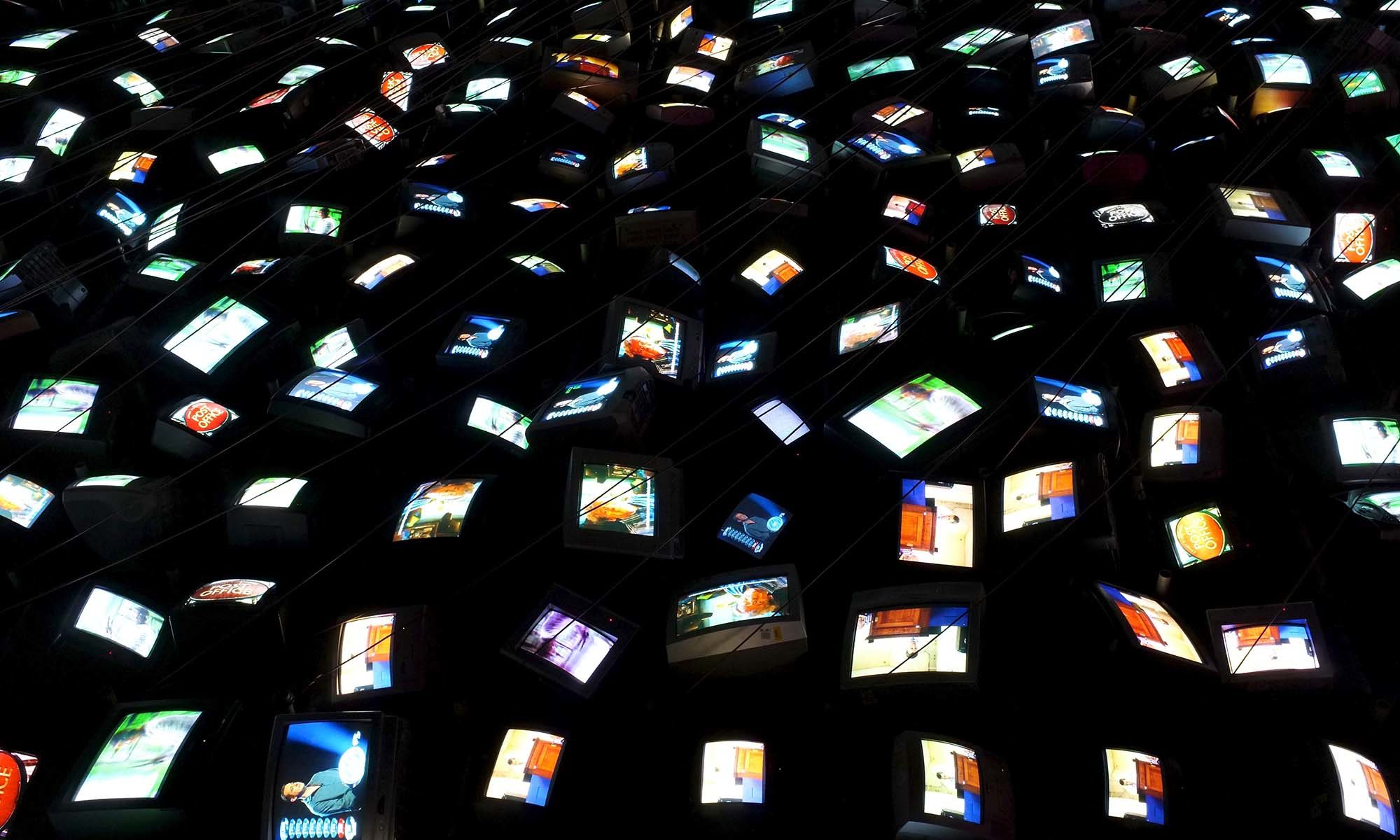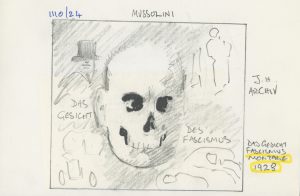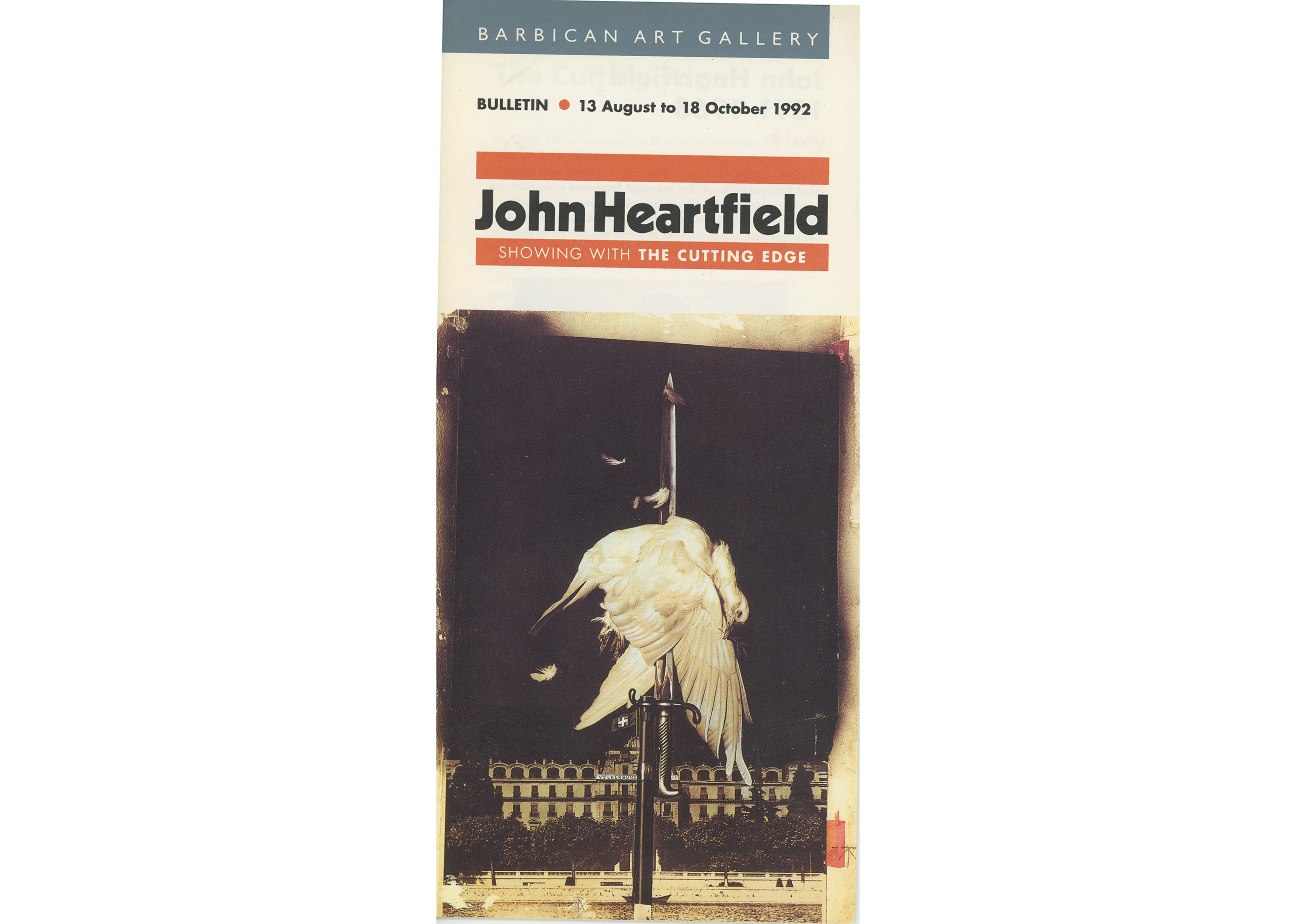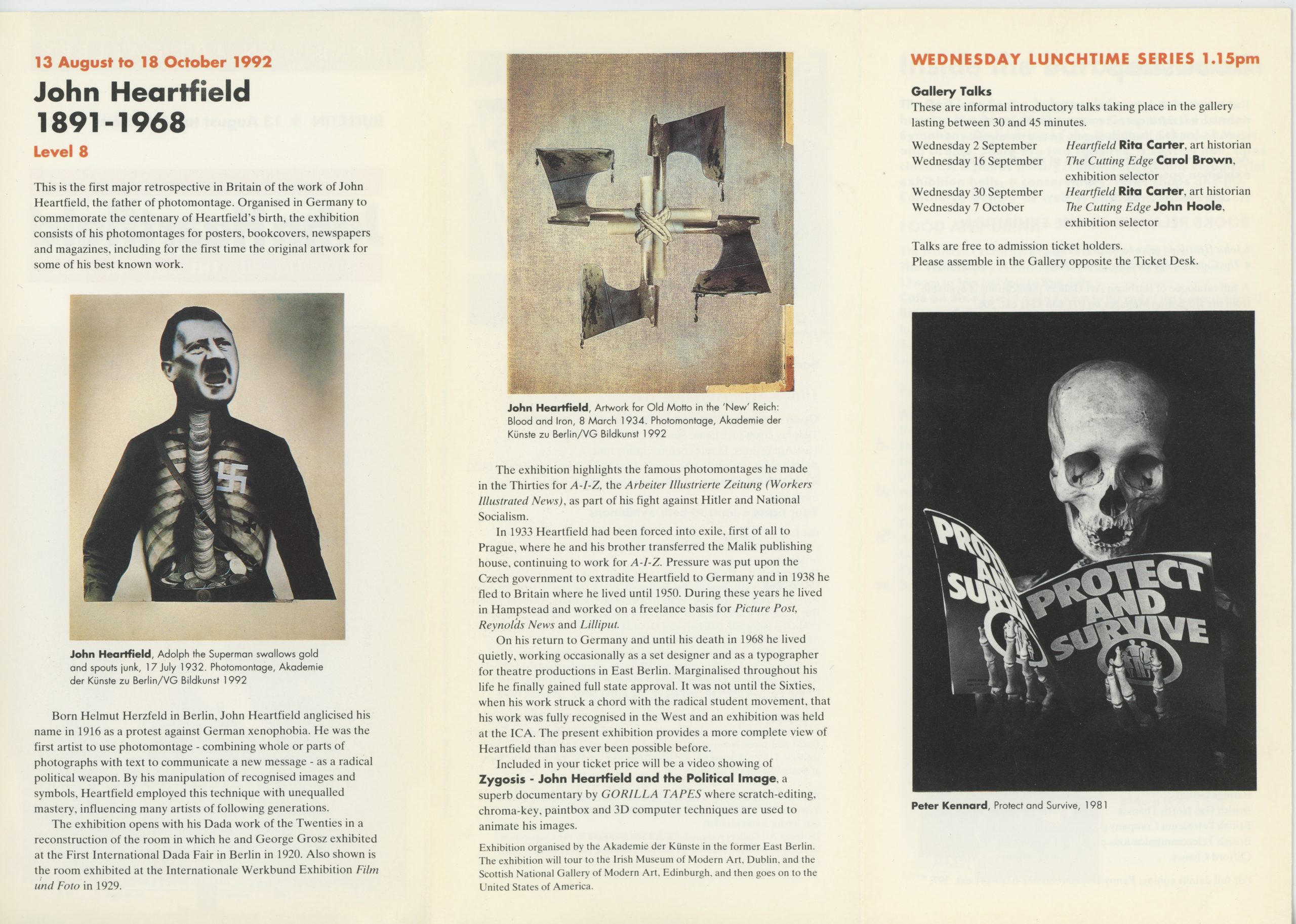RE_EXHIBIT 6
SATIRE WORKS HARDER: Gorilla Tapes and The Politics of Communication
Curated by Jade Smith
Satire Works Harder: Gorilla Tapes and the Politics of Communication is a hybrid exhibition presented both in physical gallery spaces and through the RE_EXHIBIT online platform. The exhibition will be showcased at DJCAD’s 2025 Masters show in Dundee from August 23 to August 31. Centred on the provocative and pioneering work of the artist collective Gorilla Tapes, the exhibition explores the role of satire as a strategy during critique. Through video art and archival material, it showcases how the group blends humour with hard-hitting critique to challenge authority, question dominant narratives, and provoke reflection.
At the heart of Satire Works Harder are three key works: Death Valley Days (1984), a scathing collage of American politics and pop spectacle; Zygosis: John Heartfield and the Political Image (1987), Exploring the development of photomontage, from John Heartfield’s pioneering work and a rare screening of To Death Till Apartheid, broadcast by the BBC, which delivers an unflinching critique of media complicity in apartheid-era South Africa. Each work reclaims and recontextualises fragments of broadcast media, using satire not simply to entertain but to expose, question, and disrupt.
Jade Smith is a recent graduate of the Master of Fine Arts in Curatorial Practice from Dundee University, where she honed her expertise in contemporary art. Throughout her research, she focuses on digital curation and the ways it can transform traditional exhibition experiences. Her work emphasises the importance of audience participation and strives to create inclusive environments that encourage engagement with art in innovative ways.
Jade Smith, August 2025

Gorilla Tapes are a London and Luton-based video art collective founded in 1984 by Tim Morrison, Jon Dovey, Gavin Hodge and Jean McClements. The group became a pivotal force in the ‘Scratch Video’ movement, a form of video art that emerged in Britain during that decade, characterised by rapid editing, the reappropriation of film and broadcast footage, and political commentary. The term Scratch Video comes from the similarity to ‘scratching’ vinyl records, which produced repeated rhythmic loops, although the technique for achieving this with video was done through editing rather than live.
Along with contemporaries Duvet Brothers and George Barber, Gorilla Tapes created various brief, experimental videos that frequently criticised media culture, politics, and power dynamics. Two of their more well-known pieces, Till Death To Apartheid (1985) and Death Valley Days (1984), reframe mass media information using video collage techniques. Death Valley Days, their pioneering first production, helped develop the editing style and techniques used in Scratch Video.
In addition to their artistic practice, the collective also produced an extensive range of programmes, including non-broadcast, corporate, and instructional films, as well as magazine segments, drama, arts, and entertainment for the BBC, ITV, Sony, Channel Four, and the British Film Institute.
In 1991, Gorilla Tapes were awarded the Grand Prix for Best Short Film at the 33rd Bilbao International Film Festival and the Silver Hugo Award at the Chicago International Film Festival. These awards emphasise the significance and ongoing relevance of their contributions to media critique and experimental video.
Zygosis pays homage to a highly influential artist of the 20th century, whose impact is evident in the realm of advertising. This artwork employs German visual artist John Heartfield’s (1891-1968) innovative photomontage techniques to create a critique of the interaction between media and politics. Through an arrangement of images and text, the piece invites viewers to reflect on how visual culture shapes public perception and influences societal discourse.
Exploring the development of photomontage, from John Heartfield’s pioneering work to the present use of montage techniques in advertising and video. The film deals with photomontage in a radical and humorous way, and applies animations of archive footage, interviews, and images of Berlin when political upheaval occurred and the Berlin Wall was taken down. Scratch editing, the Quantel Paintbox, and 3D computer animation have replaced the scissors and gluepot that John Heartfield started out with.
Zygosis then went on to be shown at the John Heartfield: Showing the Cutting Edge at the Barbican Art Gallery, London, 1991. Both Gorilla Tapes and John Heartfield utilise satire as a means of resistance. In the 1930s, Heartfield employed photomontage and satire to criticise fascism and propaganda. Similarly, Gorilla Tapes uses satire and remixed broadcasts to challenge conservatism and Margaret Thatcher’s time in government. Although they are separated by different mediums and historical contexts, both artists subvert the language of authority, demonstrating that satire, when employed strategically, can serve as a powerful form of dissent.
“In its content and form, Zygosis is a homage to one of the 20th Century’s most influential artists, whose impact can be felt in advertising and in the work of artists like Andy Warhol, Peter Kennard and Barbara Kruger and the graffiti artist Banksy.”- BFI
Since its launch in 1984 at the Institute of Contemporary Arts, London, Death Valley Days has been screened in the USA, Europe, South America, Australia and throughout the UK. This four-part video, Santa Fe Trail, Secret Love, Commander in Chief, and Crime Watch, uses rapid-fire montage to dissect the absurdities of Cold War-era television. Combining clips from American soap operas, news, political speeches, and commercials, the work delivers a darkly comic critique of media, consumerism, and power. Through the scratch video technique, Gorilla Tapes turn familiar broadcast imagery into a fragmented, satirical vision of 1980s ideology.
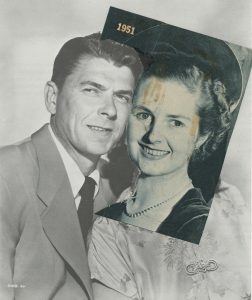
Here we can see the early stages of development for Death Valley Days. In this collage of Ronald Reagan and Margaret Thatcher, Gorilla Tapes uses a satirical approach to critique the roles of Reagan and Thatcher in power. Both are seen as ideological allies of conservatism. This collage reimagines Ronald Reagan and Margaret Thatcher through the satirical lens of the Gorilla Tapes. By referencing Reagan’s old TV role in Death Valley Days, this further adds to the tactic of mocking and creating an unserious perception of Reagan.
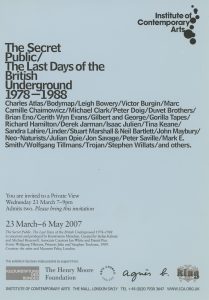
The initial screening at the Institute of Contemporary Art (ICA) played a pivotal role in establishing its lasting reputation within the art community. This event showcased works that were not only innovative but also resonated deeply with the cultural and political issues of the time. A number of years later, the series made a notable return to the ICA for the 2007 exhibition titled The Secret Public. This revival struck a chord with audiences, evoking nostalgia while simultaneously demonstrating how the series’ incisive and clever critiques of politics and the media continued to hold significance in contemporary discourse. The exhibition served as a reminder of the power of art to reflect societal truths, challenging viewers to engage critically with the narratives shaping their world.
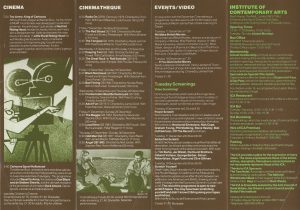
Commissioned for BBC2’s Saturday Review, this piece addresses the apartheid South African Botha regime’s press ban and was first broadcast on 30 November 1985. It includes interviews and a studio debate on the legal and ethical issues surrounding visual copyright, particularly as raised by the emerging scratch video movement. The work also marked the launch of the British Artists Against Apartheid campaign. It was later featured in the BBC’s entry to the 1986 National Video Festival in Los Angeles and included in the Channel 4 youth series Outsider.
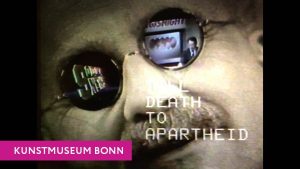
This work was one of seven historical positions in the anniversary edition of VIDEONALE.20 at the Kunstmuseum Bonn Gallery in Bonn, Germany. The show ran from April 11 to May 18, 2025. This artwork was a standout among the seven historical pieces showcased in the anniversary edition of VIDEONALE.20, held at the Kunstmuseum Bonn Gallery in Bonn, Germany. The exhibition, which celebrated the evolution of video art, ran from April 11 to May 18, 2025, drawing numerous visitors and art enthusiasts. This particular work had previously been displayed at the same gallery in 1986 during the VIDEONALE.2 exhibition, marking it as a significant piece in the history of video art. Its inclusion in both shows highlights its lasting impact and relevance in the art community.
Interview with Gorilla Tapes by Jade Smith, July 2025
“It’s part of the history of the evolution of where we are now with media, and therefore it has a place”- Jean McClements, 2025
Gorilla Tapes and scratched video, as a whole, have redefined media art as we know it today: not only humorous but also disruptive, political, and a medium for critique. The use and adaptation of found footage, along with a satirical tactic, allowed their work and message to be broadcast with the traditional gallery space, enabling a larger-scale impact.
Gorilla Tapes are not retro, they are recurring. The formats in which these works were made and produced may have changed, but the message still stands today.
Smith, J. (2025). Gorilla Tapes Interview
Screenonline.org.uk. (2025). BFI Screenonline: Zygosis (1991). [online] Available at: http://www.screenonline.org.uk/film/id/728030/index.html [Accessed 9 Aug. 2025].
Videonale.org. (2025). VIDEONALE.20. [online] Available at: https://v20.videonale.org/en [Accessed 9 Aug. 2025].
Ica.art. (2025). ICA | Exhibitions. [online] Available at: https://www.ica.art/exhibitions [Accessed 13 Aug. 2025].
